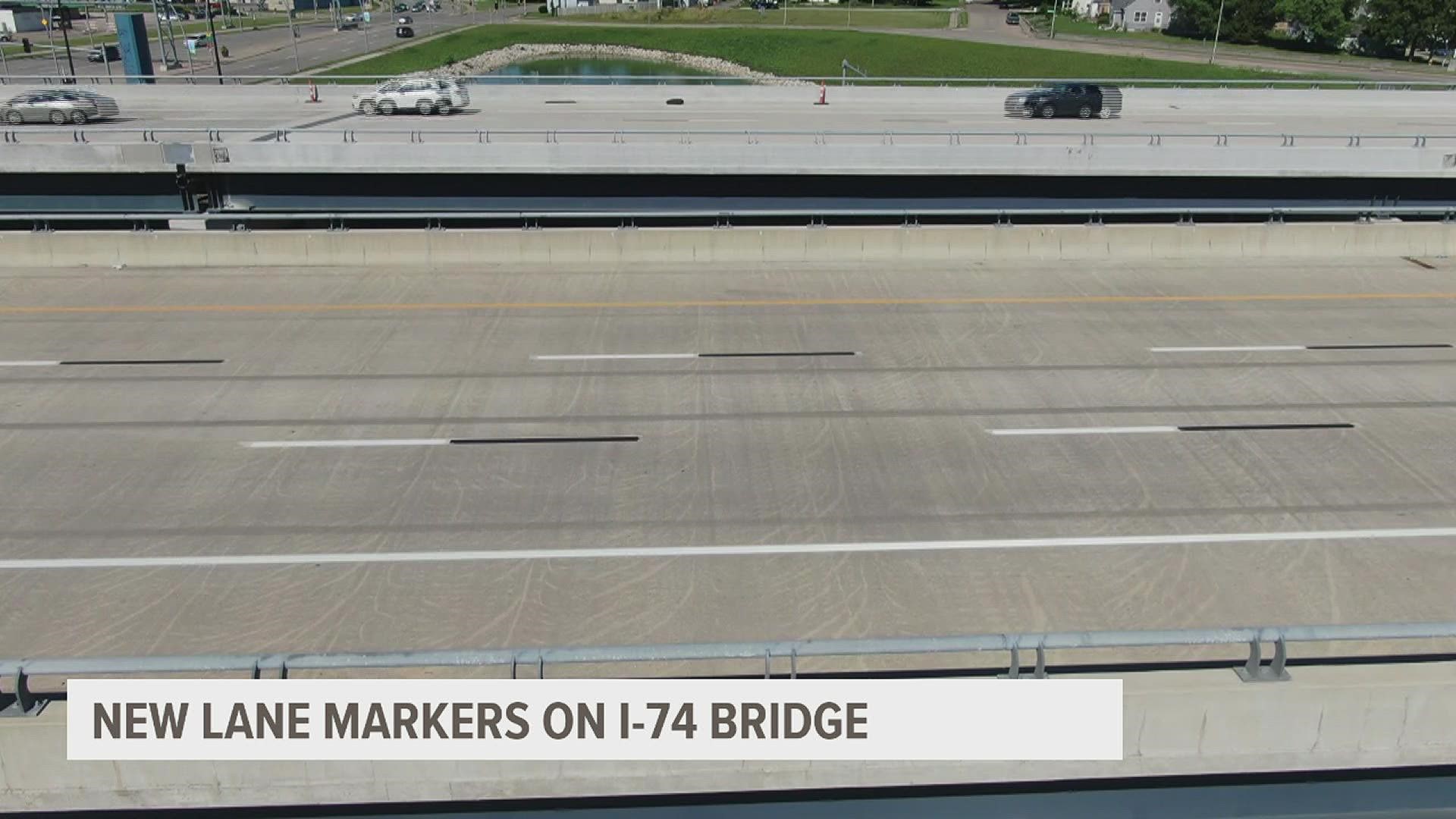BETTENDORF, Iowa — Drivers going across the I-74 Bridge recently might have noticed new lines on the road within the past month or so and wonder what they are.
News8 spoke with Clayton Burke, a Traffic Safety Engineer with the Iowa Department of Transportation, about what the new lines mean and how they affect drivers.
According to Burke, the new black-and-white lines are called contrast markings, which are designed to improve line visibility in different weather conditions.
The markings consist of alternating white and black lines and are part of an interstate markings project launched by the DOT several years ago.
Burke draws an analogy to the bright white or yellow lines you see on dark asphalt, highlighting how those colors pop when compared to the black road.
Similarly, the black lines on the concrete I-74 Bridge are designed to contrast the gray road, especially when certain weather conditions, like bright sun, make the normal white lines harder to see, especially when the lines begin to fade after years of sunlight exposure.
"So what we're doing with this black contrast marking, and it works really well on concrete pavement as well, because concrete is typically a little lighter, it gives you that black line," Burke said. "So if it's tough to see the white line in certain conditions, if it's really sunny out, and you're getting a lot of that sun in your face, that black line is gonna stand out a little better."
Burke also cites technological advancement in vehicles, noting that many modern cars that use cameras to assist with driving, and that the new lines can be beneficial to those systems.
"Particularly because what that camera's doing in your car is it's picking out every little pixel in the picture that was looking at, and it's looking for a light colored pixel and a dark colored pixel and that's how it picks up that the line that it's looking for," Burke said. "Or if it's looking for the edge line, it's looking for a yellow-colored pixel and then there's a different contrast layer. But on the center line, that contrast marking helps pick out the differentiation between the white markings in the pavement so that it knows that there's a line there and that will help your Lane Keep Assist operate; which is the big one, you know, keeping everybody in their lane, not drifting side to side."
Additionally, there are glass beads inside the contrast markings that reflect sunlight or reflect car headlights back at the driver. Some of the taller glass beads also sit slightly above the surface, allowing them to reflect light when the road is covered in water during rainfall.
Burke said that the DOT is planning to expand contrast marking to most of Iowa's interstate over the course of the next five years and that the focus of the goal currently is the Davenport and Des Moines areas, where the state's highest traffic resides.
"Because there's a lot of traffic in the Quad Cities, so that's why the bridge is done right now. So we're trying to target new construction. Because when you catch a section of pavement or a bridge right at the beginning of its life, that's where you get the most value out of those pavement markings." he detailed.
When asked about the cost of applying the new lines and material, Burke said that while these contrast markings are more expensive off the bat than standard road lines, their longer longevity means that maintenance crews will not have to repaint lines as often; which he thinks will be a net saving.
"And there's a lot of those intangible savings that are really hard to account for but yeah, we definitely feel like it's a big benefit for the cost that we're paying."

